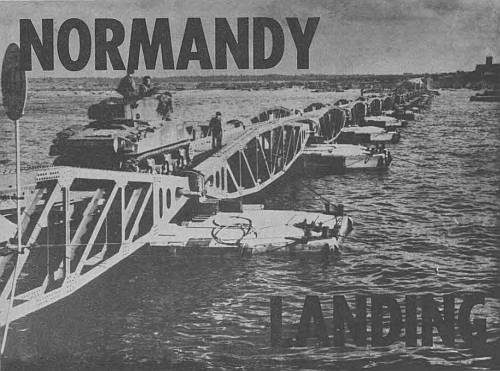- Author
- Smythe, D.H.D., AO, Commodore, RAN
- Subjects
- Biographies and personal histories, History - WW2
- Tags
-
- RAN Ships
- None noted.
- Publication
- March 1975 edition of the Naval Historical Review (all rights reserved)

For five days in June 1944, a young Australian Naval Lieutenant who was serving on exchange duty as the Gunnery Control Officer in a British cruiser kept a diary. Those days covered the days immediately before, and the day itself, of the landings in Normandy on 6th June. The diary was subsequently, after some deletions by the wartime censors, sent to an Australian newspaper.
A Five Day Diary – Second Front
Friday, 2nd June 1944
We’ve just sailed in the British cruiser HMS Danae at the start of the trip which, barring accidents or unkind weather, will finish with the assault on fortress Europe. The Navy’s part will be easier for the individual than the Army’s; I might almost say that we’ll be having a grandstand view from a safe ringside seat, with Tommy Atkins and his Yankee cousin providing the entertainment at the cost of the Hun. But at least we shall be in it, and for that I shall be both proud and thankful. Proud because I will be an officer in a fighting unit of the world’s most famous service in the biggest moment in history, and thankful because to have been away at this moment in some easy situation would have made me extremely disappointed. True, I have had a minor part in other battles of this war, but none of them comparable to this terrific assault which will be to my mind the keypoint of the whole world war.
We slipped unobtrusively out of the Clyde this afternoon, as we have done several times in the past fortnight, and no doubt the shoreside watchers gained the intended impression that we were off for another exercise. But, again all being well, this journey will finish off the coast of France on Monday morning, June 5th 1944 – a date which could become a historical one.
Rear Admiral Patterson leads this particular force. Hardened seadogs and inwardly-scared new entries alike will look to him for leadership and wisdom. From HMS Mauritius he controls us, Force D for Dog, the bombardment force of Force S, the naval covering force for Sword area. His cruiser Mauritius, ourselves, Arethusa and the Polish Dragon, following behind the eleven neat little ships of the 40th minesweeper flotilla, are at the moment strung out in line ahead some miles ahead of the two battleships Warspite and Ramillies, with their screen of four ‘S’ class destroyers and two frigates, Rowley and Holmes. Tonight and tomorrow all should be quiet, and it will not be till Sunday that we shall know whether we are committed to the attack or not. So until then we can take stock of ourselves and prepare for whatever may befall us.
Saturday, 3rd June 1944
The day has passed quietly enough for us, if one can disregard the inescapable undercurrent of excitement and tension that grips us all. Since early morning, as we have crawled southward down the west coast of Britain, we have been constantly passing or being passed by other ships bent on the same enterprise as ourselves. Southward, ever southward, moves the gathering power of our sea might. First, this forenoon, we overhauled and passed a convoy of some fifty vessels, every one of them one of those famed ships produced by the Americans, the Liberty ships. In the afternoon a force of aged US battleships and French cruisers, escorted by speedy, modern Yank destroyers, came up astern and in time disappeared ahead. As I write this we are overhauling another mighty merchant fleet, while throughout tonight we shall pass, no doubt, many another member of our joint forces of liberation.
Devon’s in sight ahead now, as we cross the Bristol Channel, and soon we shall be making the Lizard, with its threat of intensive U-boat concentration and, by tomorrow night, I trust we shall be on our way toward northern France, our goal. Our immediate objective will be Ouistreham, at the mouth of the Orne, and within 48 hours that name among others will be on the lips of millions the world over. I only trust that we all three Services may do justice to the hopes of the world of freedom-loving peoples, that the Navy may live up to its honour and worthily support our brethren in khaki, and that this ship may show that her 25 years of life have not lessened her sting when the great moment comes.




